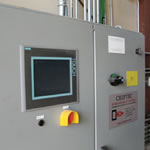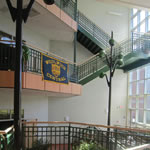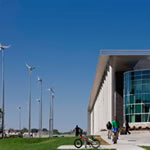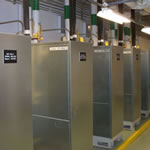Every school design tells a story. These stories can come in the form of energy efficient windows and lighting, or even a digital gauge that displays how much energy the school is using at any given time.

Chipping away at energy costs.

Putting students and learning first in a daylight-enhanced environment.

Nurturing, teaching and promoting sustainability for future generations.
Every year, campus communities across the country are faced with a deluge of waste as students moving out for the summer discard thousands of unwanted items.

Green schools grow environmentally conscious students.

It takes more than bricks, mortar and roofing materials to keep the heat (or cold) in and the rain out. Here's a look at what you need to know.